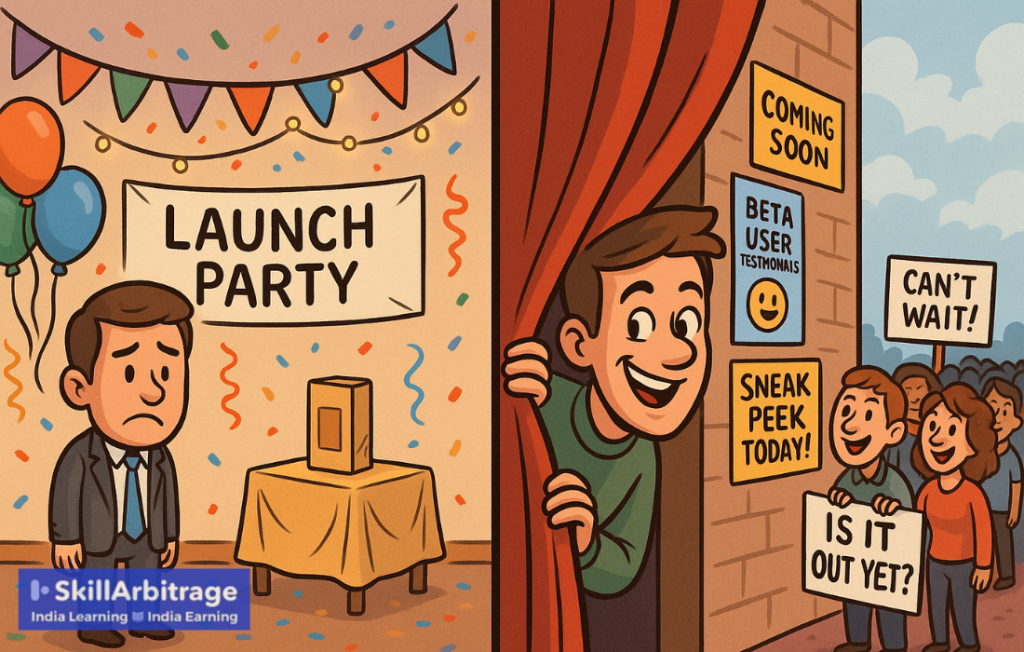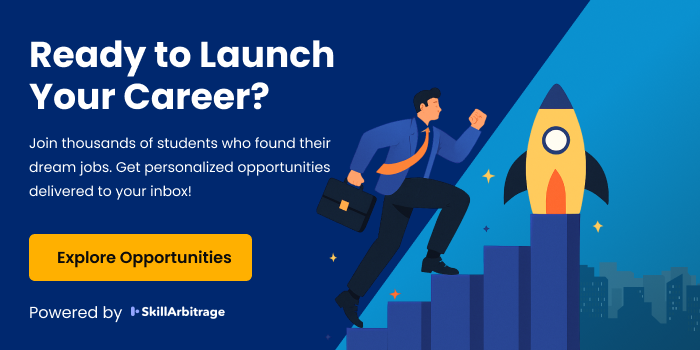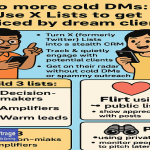This blog will show you how to build serious demand before your product or service even goes live, so that when you finally launch, people are already waiting to buy.
Table of Contents
Introduction
You spend weeks building your offer. Naming it. Pricing it. Polishing every detail till it looks perfect. Now you feel the day it’ll launch, it will blow up, but what happens when you launch? Silence.
No DMs. No add-to-carts, no rush. Just a few site visits and a lot of confusion about what went wrong. I’ve seen this happen too many times, and not just with beginners but even with experienced entrepreneurs.
The mistake they make is that they build the offer first and try to create demand afterward. But that’s backwards and inefficient.
Think about it. Would you sell tickets to an event on the day it’s happening? With no posters, no pre-buzz, and no one knowing it was even planned. Of course not, because then the seats will stay empty even if the event isn’t bad.
Launching an offer works the same way. If you want people to rush to buy when you launch, they need to “want” it even before you launch. That’s what “building demand” really means.
Most people think demand shows up from the sky when the launch happens. But if you wait till launch day to create it, it’s already too late, and it’s going to be 10 times more difficult to get demand now.
If you’ve ever launched something and felt disappointed by the response, even though you knew your offer was good, then this blog is for you.
I am going to show you exactly how to build demand before your launch so that when the offer is launched, you’re not chasing people, but they already wait with their wallets open. But first, we need to break a myth that most people believe in.
The lie that kills your launch
One of the biggest lies people keep hearing online is, “Build in silence. Launch loud.” Every business owner must have heard this quote sometime from somewhere in their journey. But, very few of them know that this is a myth.
See, the concept is correct that before the launch, you should keep your entire focus on finishing the product, polishing everything, and keeping it perfect. But no matter how good your product is, if people don’t know about it, they won’t buy it.
See the quote “Build in silence. Launch loud” sounds mysterious and feels smart, but in reality, it kills your momentum before you even start. Let me explain to you with even more clarity.
See if nobody knows what you’re building, then it means nobody is waiting for its launch. If no one knows what you’re building, no one will be waiting for its launch. Without an eager audience, your launch won’t feel like an event.
Instead, it will feel like a surprise party where nobody showed up because nobody was excited about it.
The reason why building demand even before launch works is because demand doesn’t come from perfection. It comes from anticipation. It comes from making people feel involved and showing them the journey.
People get excited when they feel like they saw something grow, and now they have a chance to finally use it. That’s why businesses that tease, involve, and share the journey always sell more because they build pull, not push.
There is a reason why production houses release trailers first, before releasing the movie. They are building demand for the movie even before the movie is released, so that when it’s released, it pulls the audience automatically towards theatres.
Now I know what you might be thinking, “But ChatGPT launched and blew up instantly. They didn’t tease anything.” If you think that way, then let me aware you with what really happened.
ChatGPT didn’t appear out of nowhere. They had years of AI research. OpenAI was already known in the tech world. GPT-2 and GPT-3 were being tested and talked about long before ChatGPT came out. AI nerds were already too excited.
So when they actually launched their finished best version, it wasn’t a cold launch all of a sudden. It was a wave that had been quietly building for years.
And unless you’ve got Elon tweeting about you or tech press writing about your product for free, your silent launch won’t go viral. You will have to figure out how to do that by yourself.
And now most of you would think you need to start a full-fledged marketing campaign, screaming and hyping things up. That’s not true. You just need to give small hints and updates on what you are building, how far you have come, and how it will help people.
The game here is to build a small audience first who will be excitedly waiting, and when it arrives, they rush to buy, giving you an initial boost, and feedback to improve, so that you can save your money promoting a product that is not even close to having a product market fit.
Real-world examples
But why should you believe that it works? Because all the big brands that you know the name of regularly build demand for their new offers before they even launch. And I am not just talking about well-established brands, but this is most common in new companies.
Below, I am going to show you multiple real-world examples that will show you how a well-executed demand-building campaign before launch helped their offer turn into a sales machine on the launch day.
1. Tesla’s $325 million pre-orders in 1 week
You already know Tesla, the giant electric car company valued at over $920 billion today, led by Elon Musk, right? But what you probably don’t know is that their entire Model 3 launch success came from building hype before anyone even drove the car.
In 2016, Elon announced the Model 3, which was an affordable electric car. The car was not even ready, but people got so excited that they lined up outside Tesla stores to pay $1000 just to book one car. They hadn’t even seen or tested it yet.
The result? Tesla received 3,25,000 pre-orders in just 7 days, which brought them around $325 million upfront and over $14 billion worth of cars pre-booked. This became the biggest product launch in history at the time.
Now imagine you announce a product, people line up, give you millions of dollars upfront, and you haven’t even built the product yet. That’s the power of building demand BEFORE launching, and that’s exactly what Tesla did.
2. Robinhood’s 10 lakh users waiting before launch
Robinhood, currently valued at over $42 billion, was a nobody in 2014. They also decided to create demand before launching through a very clever waitlist strategy.
They launched a simple waitlist where users could move up in the list by referring friends. Those who were up would get access first. This made users compete and spread the word aggressively.
The result? 5 lakh people joined the waitlist even before Robinhood was officially launched. By the time they publicly opened, they had over 10 lakh users eagerly waiting to start trading.
Now, picture your business having 10 lakh customers lined up on day one without spending a single rupee on ads. You launch and boom. Instant success.
3. Disney’s 1 crore subscribers on launch day
You know Disney? The home to Marvel, Star Wars, and every childhood story you grew up watching. In 2019, they decided to launch their own streaming platform called Disney+.
But they didn’t just open the doors suddenly and started waiting for people to sign up because they also knew it was important to build demand even before launching. They spent months teasing it and showing what content would be there.
What happened next? Over 1 crore subscribers signed up on the first day itself. Yes! 1 crore paying subscribers within 24 hours. This wasn’t luck. It happened because Disney made people wait and want it long before launch.
What you need to understand is that if you build demand before you launch, you’re basically increasing the probability of your own success. There’s a reason why the biggest brands in the world still follow this exact playbook every time they launch something new.
I bet after seeing these examples, you’re already imagining thousands of customers lined up for your offer even before it’s ready. So, why wait to make it a reality?
A step-by-step method to build demand before launching your offer
Before we jump in, let me make something clear. This isn’t about randomly teasing your product and hoping people magically somehow get excited. It’s also not about creating fake hype or spamming your followers every day.
Our goal is to set up a simple system that can build genuine excitement for your offer long before you actually launch. It won’t just make people curious, but it’ll make them eager to buy without you ever having to push hard or feel salesy. Ready? Let’s start.
Step 1: Start showing the problem at least 4 weeks before the launch
The mistake that most businesses make is that they build the product in silence, then announce it when it’s ready, and expect people to care. But just ask yourself, if your market doesn’t even know they have a problem, why would they care about your solution?
That is why you need to make them feel the problem. You need to make them feel it’s severe. You need to create problem awareness weeks before your launch. Not just understand it, but feel the pain of it so that by the time you launch, they’re already thinking “I need this thing.”
1. Define the specific problem your offer solves
Most business owners can’t describe their product’s core problem in one line. That’s why their marketing doesn’t work. You need to be brutally clear about what pain your product or service solves.
Let’s say you’re launching a software that automates customer follow-ups for service businesses. In that case, your core problem might be, “Businesses are losing lakhs every year just because they forget to follow up with leads.”
Once you define that clearly, everything you say from now on should revolve around that one pain.
2. Make them feel the problem
Once your core problem is clear, the next step is to make your audience feel that problem because until they don’t feel it, that’s not a real problem you can sell a solution for.
Here, you have to build an emotional connection. You have to prove to them that the problem is real, relevant, and already costing them money or peace of mind. Your job now is to bring the problem to life with examples that hit hard.
Let’s say you’re launching that same SaaS tool. You could say, “One of our beta users lost a ₹4L deal just because the lead went cold. All because no one followed up in time. This is happening in your business, too. You just don’t track it yet.”
These are wake-up calls that will make people stop scrolling and think, “Wait, this is exactly what’s happening to me.”
And that’s exactly the goal. If your prospect sees themselves in the problem, you won’t need to convince them later. They’ll already be looking for it.
3. Ask the right questions
Once people start recognizing the problem, the next move is to dig it even deeper into their minds. You don’t need to lecture them or bombard them with data. You just need to ask the right questions that force them to admit the problem themselves.
For example, if you’re launching that same SaaS tool, you could ask, “How many leads do you forget to follow up with each week?”
Or if you’re selling a CRM replacement, you could ask, “Is your sales team still using spreadsheets to track client conversations?”
These questions are not random. They’re designed to create self-doubt. They make people pause, think about what they’re losing every day, and realize there’s a gap in their current setup. And that’s exactly what you want.
Now, when you finally announce your offer, you’ll not just be shouting into the void. That’s because you’ve already built demand and made people feel the problem. You’ve already positioned your product as the obvious solution.
As the launch day comes close, and people are already feeling the problem, now it’s time you start hinting to them that there’s a solution. That is the moment you start making them excited and impatient about thinking what the solution is.
Step 2: Tease the solution
Once you’ve made your audience feel the problem deeply, the next move is not to just wait till launch day to jump into selling. That’s what average businesses do, and it kills curiosity. Your next step is to tease that you’re building something without revealing everything.
Think of it like how movies drop a teaser months before the trailer even comes out. You want to get people curious, excited, and wondering what’s coming without giving them all the answers yet. Here’s exactly how you can do it:
1. Make them curious
You don’t have to reveal the product yet. Now you just need to build tension using simple lines that hint you’re working on the problem to get a solution without giving the full picture.
For example: “We are working on something crazy for everyone struggling with proper lead management. It’s not ready yet, but it’s coming.”
This is going to make people curious, and they will start thinking, “What is it? When will it launch? Will it fix my problem?” That’s exactly what we want to happen.
2. Tell them progress is happening
A few days after you tease the problem, now you need to casually show that real progress is happening and it was not just a fluff.
No need to do a heavy promotion. Just give small behind-the-scenes updates that make your work feel real without giving away the full offer. For example: “Testing the final version this week. It’s looking even better than we planned.”
Doing this builds trust and excitement at the same time. It makes people feel like something serious is coming and that it’s not just random talk.
And boom, the demand will start to build while you still prepare. This way, you’re just making them curious, excited, and emotionally invested before they even see the product.
So that when you finally launch the offer, it doesn’t feel like a cold pitch but feels like you’re giving them the thing they’ve been waiting for.
Step 3: Involve people
Now that people are feeling the problem and getting curious about the solution, it’s time to pull them even closer, so close that they are deeply interested. That is our final move to make them interested. How will we do that?
By simply involving them in whatever we are creating, so that they feel like it’s their product/service too, and it’s designed according to them. This is important because the more someone feels involved in the creation process, the more emotionally invested they become
Once people are invested, they won’t just hope that your product succeeds instead, they will want it to succeed because it will feel like their product too, not just yours. Then, when you launch, buying, sharing, and supporting it will feel natural to them.
1. Polls
Start by running simple and easy polls on social media, your email list, WhatsApp groups, everywhere you think your audience hangs out. You can also run these as ads.
These polls will make people feel like their opinions matter and they are helping shape your product/service. For example: “Finalizing the color theme! Which vibe do you prefer? (A) Sleek dark mode (B) Bright minimal white.”
2. Direct questions about their struggles
Start asking direct questions that will uncover their biggest struggles. These questions should dig deeper and reveal the real pain your audience is experiencing, giving you emotional data to use later in your marketing as well.
When people answer these direct questions about their struggles, firstly, they will feel deeply involved because you asked their opinion. And secondly, you will get real-world language and insights you can directly use in your sales messaging.
For example: “What’s your biggest headache when it comes to managing customer leads?” or “If you could fix just one thing about your daily water usage, what would it be?”
3. Behind the scenes (BTS) updates
Start sharing small, casual behind-the-scenes (BTS) updates to show your audience that real work is happening. These updates shouldn’t feel promotional. Instead, they should feel genuine and personal, like giving the audience exclusive access to the journey.
For example: “Shot 3 training videos today for the upcoming lead management tool. Exhausted but super excited with how it’s shaping up!”
Now it will not just be your product anymore. It will be theirs too, which is why, by the time you launch, you won’t need to pitch strangers or convince cold audiences. Instead, you’ll be unveiling something your audience already feels emotionally connected with.
Now you have created excitement and hype, but this is not enough. You need to collect leads that have the highest probability of becoming your first customers. It will be super easy if you had created the hype part correctly.
Step 4: Capture early interest
Now is the best time to capture their intent. If you don’t collect their interest now, by the time you launch, some people will lose excitement. Attention is short, and curiosity fades. You need a way to lock in the hottest leads while they’re still excited.
Your goal here is to gather your most serious potential buyers into a list before you even open the doors. And once you have that list, your launch becomes way easier, way stronger, and way more predictable. Here’s exactly how you can do it:
1. Announcement
Start by announcing that a waitlist is going to open soon, maybe for beta testing or due to limited availability. Choose a reason you feel will fit your product/service. This tiny move will change everything and create a sense of exclusivity.
For example: “Doors are not open yet, but I’m creating a waitlist. Join to get early access before the public launch.”
2. A simple way to join
Now, create a simple and easy way for them to join the waitlist. Don’t complicate it. You can use a straightforward Google form, Typeform, landing page, or even something as simple as DM replies on Instagram or WhatsApp.
The goal here is just to quickly collect their names, emails, or phone numbers so you can easily reach them when your launch goes live. Just keep it quick and frictionless. No long surveys, no complicated steps, just fast and easy signups.
For example, your form could say something like: “Enter your email to get early access before we launch publicly.”
3. A reason to join
After setting up the waitlist, you need to make it even more irresistible by offering a special bonus only for early access members. The bonus doesn’t have to be huge. It just needs to feel valuable and exclusive. It could be anything like:
- An extra discount
- Early access before prices go up
- A bonus training, a free module, or a small gift
This small move will create urgency and push more people to sign up quickly because nobody wants to miss out on a special benefit reserved for early movers. For example: “Early access people will get a special bonus that public buyers won’t. Details soon.”
You will now have a list of people who are already half-sold even before you launch. This way, even if nobody else from the outside world buys on launch day, these waitlist members will still buy because they’ve already shown intent.
Not only that, but these people will also be the first to share and support your launch with their friends, hence bringing referrals too. And that’s how you can create demand for your product/service even before you launch.
Conclusion
Most people think building demand happens after you launch, but I hope now you can see that if you wait until launch day to get attention, you’re already too late.
I have just given you the exact, step-by-step system to build real, emotional demand weeks before your offer even goes live so that when you finally launch, people are already excited, curious, and ready to buy.
So from now on, no more silent launches, no more guessing games, and no more hoping people magically show up. Now it’s your turn to take everything you’ve learned here, apply it to your next launch, and experience what it feels like to sell to a crowd that’s already waiting.
FAQs
- What if I don’t have an audience yet? How do I build demand then?
If you don’t have an audience, start by borrowing one. Collaborate with small creators, run mini-ads, and engage in relevant communities. You don’t need 10,000 followers. Even 100-200 right people can be enough to kickstart real demand if you warm them up properly.
- Is it okay to tell people the full details of the offer before launch?
Not really. Full details kill curiosity. Your goal before launch is to tease, hint, and build excitement, and not to fully reveal everything. Leave some mystery so that people feel pulled to check out the launch when it finally happens.
- How early should I start building demand before launch?
Ideally, 30-45 days before launch. If you start teasing too late (like 3-5 days before), you won’t give enough time for people to feel the problem deeply and get emotionally invested.
- Won’t people lose interest if I talk about the problem for too long?
No, not if you keep it fresh. Rotate how you talk about the problem. Use different examples, different angles, real-life stories, and user struggles. You’re not repeating, you’re deepening their realisation of why they need your solution.\
- What if people get annoyed with too many teasers?
If your teasers genuinely connect with their problems and show real progress, they won’t get annoyed. People only feel irritated when posts are repetitive, all hype, and have no value. Keep it useful, personal, and casual, not just promotional.
- How do I know if my demand-building is working before the launch?
Simply watch engagement. Are more people replying to your questions? Are people joining your waitlist? Are you getting DMs asking, “When is it launching?” That’s proof that your demand is working even if you don’t have buyers yet.
- Should I announce an exact launch date early or keep it flexible?
If you’re confident about your readiness, announcing a date builds more urgency and excitement. If not fully ready, tease the “coming soon” idea first and announce the exact date only when you’re 100% sure.







 Allow notifications
Allow notifications
